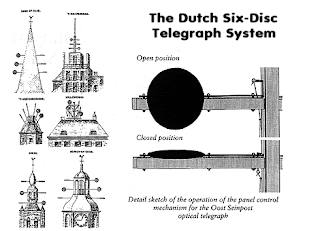In 1833 the Charter of the East India Company was renewed. Influenced no doubt somewhat by the Anglo-Indians' petition, Section 87 of the said Act stated that -`No native of the said territories, nor any natural born subject of His Majesty resident therein, shall, by reason of his religion, place of birth, descent, colour, or any of them, be disabled from holding any place, office, or employment under the said Company. In theory all posts were thrown open to people of any race in India, but in practice only the subordinate trades were bestowed upon Indians and Anglo-Indians, since higher services could be filled only by recruitment in England. Fortunately for Anglo-Indians, about this same time (1833), English took the place of Persian as the official language of the Courts and Government offices. In future English was to be the only medium of correspondence in commercial houses. English being their mother-tongue, the Anglo-Indians had an advantage in this direction and very soon many of the community found employment under Government and in commercial firms as clerks, though in subordinate positions. This advantage, however, was only temporary because Lord Bentinck, who was Governor-General from 1828 to 1836, with the cooperation of Lord Macaulay who drew up his famous Minute on Education in 1835, determined that `The linguistic disadvantage of Indians should be removed, and accordingly instruction in English was ordered to be imparted in Indian schools. Very soon the graduates from Indian Universities and educated young men from the Government High Schools were rapidly elbowing Anglo-Indians out of the clerical posts which they had filled efficiently.
Fortune once again came to the rescue of Anglo-Indians for soon new avenues of employment were opening up for them. In 1825 the first railway had run in England. In 1845 the East India Railway was projected in India. Simultaneously railway schemes were set on foot in Madras and Bombay. The first train in India ran from Bombay to Thana in 1853. In 1851 the Telegraph system was inaugurated. During the latter half of the 19th century (1850-1900) Anglo-Indians found ample employment on the railways, and in the telegraph and custom services. These departments needed men of adventurous stock who were willing to endure the hardships, risks, and perils of pioneers. The Anglo-Indians had in them the spirit of their forefathers and so the community furnished - `The Navigation Companies with captains, second officers, engineers and mechanics. From them were recruited telegraph operators, artisans and electricians. They supplied the railways with station staffs, engine-drivers, permanent way-inspectors, guards, auditors - in fact every higher grade of railway servant. The Mutiny of 1857 too had proved beyond doubt the absolute loyalty of the Anglo-Indians and removed the suspicion which had been responsible for the repressive measures of the latter part of the 18th century and the first half of the 19th century. The latter part of the 19th century and the first decade of the 20th century were once again a period of prosperity and contentment for Anglo-Indians.
artisans and electricians. They supplied the railways with station staffs, engine-drivers, permanent way-inspectors, guards, auditors - in fact every higher grade of railway servant. The Mutiny of 1857 too had proved beyond doubt the absolute loyalty of the Anglo-Indians and removed the suspicion which had been responsible for the repressive measures of the latter part of the 18th century and the first half of the 19th century. The latter part of the 19th century and the first decade of the 20th century were once again a period of prosperity and contentment for Anglo-Indians.
Fortune once again came to the rescue of Anglo-Indians for soon new avenues of employment were opening up for them. In 1825 the first railway had run in England. In 1845 the East India Railway was projected in India. Simultaneously railway schemes were set on foot in Madras and Bombay. The first train in India ran from Bombay to Thana in 1853. In 1851 the Telegraph system was inaugurated. During the latter half of the 19th century (1850-1900) Anglo-Indians found ample employment on the railways, and in the telegraph and custom services. These departments needed men of adventurous stock who were willing to endure the hardships, risks, and perils of pioneers. The Anglo-Indians had in them the spirit of their forefathers and so the community furnished - `The Navigation Companies with captains, second officers, engineers and mechanics. From them were recruited telegraph operators,
 artisans and electricians. They supplied the railways with station staffs, engine-drivers, permanent way-inspectors, guards, auditors - in fact every higher grade of railway servant. The Mutiny of 1857 too had proved beyond doubt the absolute loyalty of the Anglo-Indians and removed the suspicion which had been responsible for the repressive measures of the latter part of the 18th century and the first half of the 19th century. The latter part of the 19th century and the first decade of the 20th century were once again a period of prosperity and contentment for Anglo-Indians.
artisans and electricians. They supplied the railways with station staffs, engine-drivers, permanent way-inspectors, guards, auditors - in fact every higher grade of railway servant. The Mutiny of 1857 too had proved beyond doubt the absolute loyalty of the Anglo-Indians and removed the suspicion which had been responsible for the repressive measures of the latter part of the 18th century and the first half of the 19th century. The latter part of the 19th century and the first decade of the 20th century were once again a period of prosperity and contentment for Anglo-Indians. 
No comments:
Post a Comment